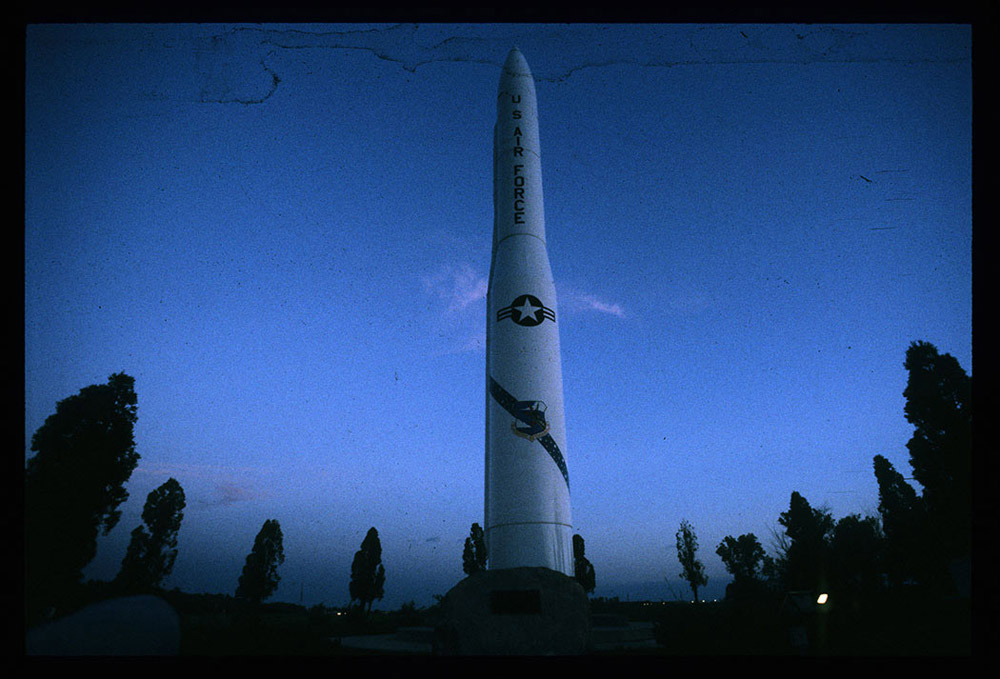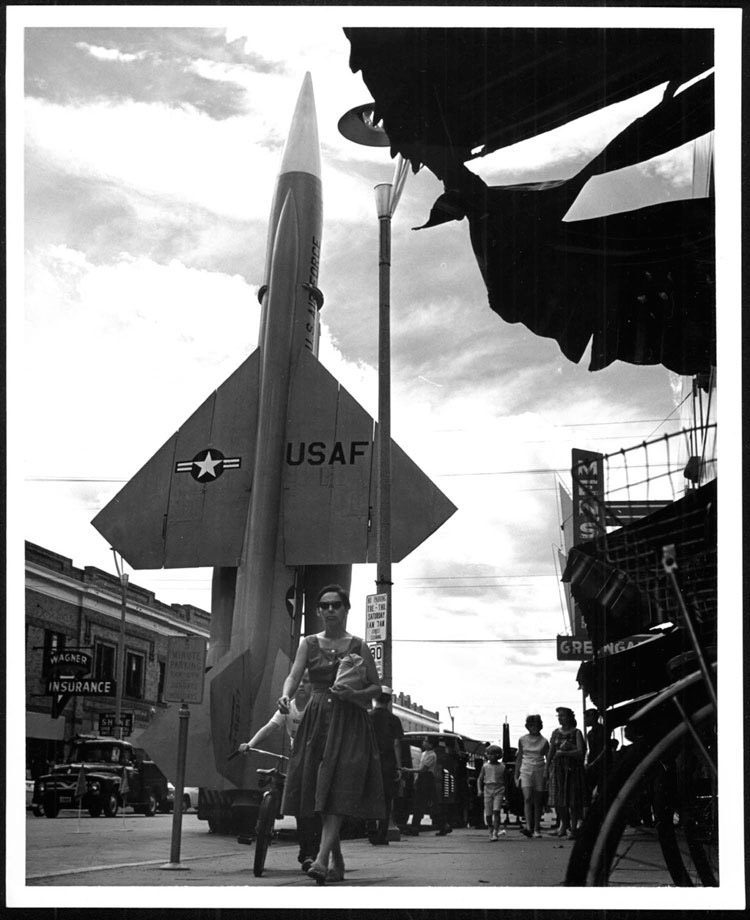The Cold War was a brand new idea in history. Old fashioned wars involved soldiers or warriors shooting or throwing some sort of weapon at an enemy. Historians wrote about the battles recording dates, numbers of soldiers, winners and losers. The Cold War had none of those qualities. The Cold War came about because of a very new sort of weapon--the atomic bomb. The bomb changed the way the world went to war.
On August 6, 1945, the United States deployed the first atomic bomb (A-bomb) on Hiroshima, Japan. No one had ever seen a weapon of this sort. Thousands of people in Hiroshima died instantly; thousands more died from burns or radiation sickness in the next few months. A few days later, a second atomic bomb was dropped on Nagasaki, Japan. This ended World War II.
For a few years, the United States was the only nation to have this weapon. Americans hoped that it would never be used again. However, on August 29, 1949, the Soviet Union (an association of Communist nations led by Russia) successfully tested an atomic bomb.

During World War II (1941-1945), the United States and the Soviet Union (USSR) were allies. Together with their other allies, they defeated Nazi Germany. However, by the end of the war, neither nation trusted the other. The USSR wanted to see communism spread throughout the world. The United States wanted to prevent the spread of communism. The stalemate led to the Cold War.
The Cold War was purposefully “cold.” Both nations had atomic weapons that could be delivered by airplane or by missile. Neither nation wanted to use atomic weapons, but both nations threatened to use these terrible bombs to achieve their international goals. (See Image 1.)

During the Cold War, the United States built a series of Air Force bases that controlled hundreds of missiles with nuclear warheads. (See Image 2.) The missiles were aimed at the Soviet Union. The Soviet Union also had missiles aimed at the United States. In 1952, nuclear weapons became even more powerful when the United States developed the hydrogen bomb (H-bomb). The Soviet Union soon had the H-bomb,Atomic bombs and hydrogen bombs work differently, but because both depend on nuclear reactions, both are considered nuclear weapons. The hydrogen bomb, however, is more powerful. too.
The United States developed a defense system to protect against armed missiles the Soviet Union might launch at the United States. These missiles, called Anti-ballistic Missiles, or ABMs, could be launched to intercept Russian missiles carrying a nuclear warhead toward the United States. Long-range missiles called Inter-continental Ballistic Missiles (ICBMs) were located in the middle of the United States. (See Image 3.) ICBMs could be sent to the USSR.
In North Dakota, 300 missiles were nestled into underground silos during the Cold War. In the 1990s, the Grand Forks Air Force Base missile mission was discontinued. The missile silos were imploded, and the launch control facilities were de-activated. Minot Air Force Base continues its missile mission with 150 active missiles.


